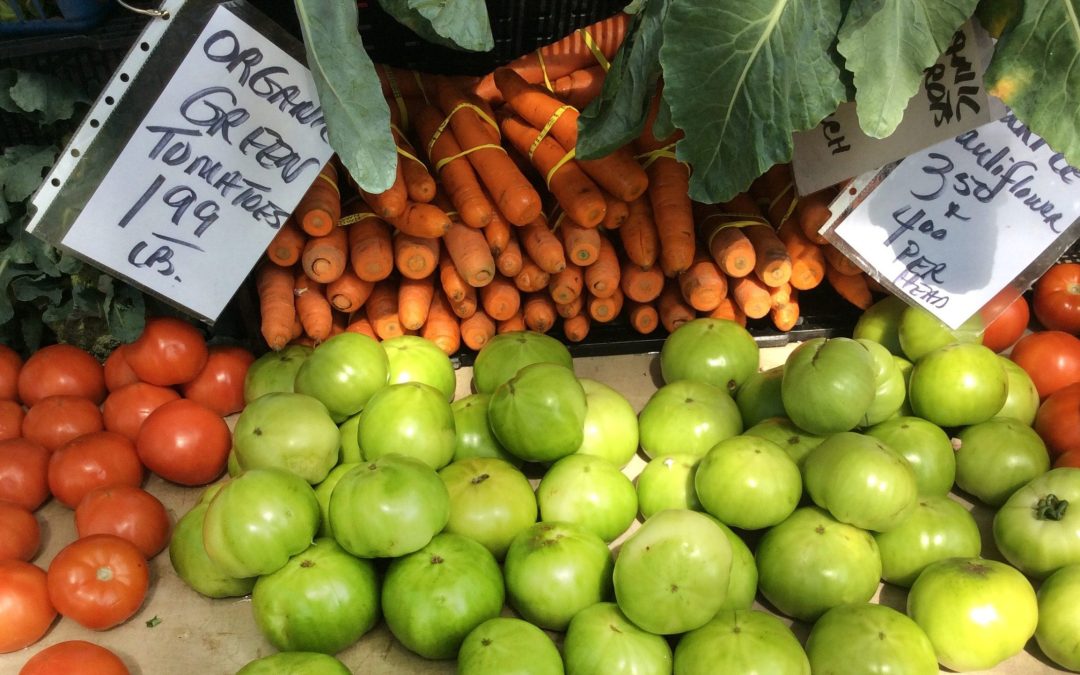The Alabama Agricultural Experiment Station (AAES) at Auburn University has announced a new regional structure of its outlying units and operations.
“The new regional organization structure is intended to focus more station-based personnel on research operations,” said Paul Patterson, dean of the College of Agriculture at Auburn and director of the AAES.
“Four new regional directors will oversee administrative matters for all the stations in their areas,” Patterson said. “Ultimately, our goal is to produce research results to advance the mission of the Alabama Agricultural Experiment Station.”
AAES operations are supported with funding support from the USDA NIFA Hatch funding program and the State of Alabama.
AAES researchers conduct innovative fundamental and applied (mission-oriented) research that supports the advancement of Alabama’s agriculture and forestry industries, for the purpose of improving quality of life and well-being of citizens and communities of Alabama and beyond.
Today, the AAES maintains active research on 11 units. An additional two units, the Upper Coastal Plains Ag Research Center (Winfield) and the Piedmont Research Center (Camp Hill) are under Memorandum of Understanding with the College of Veterinarian Medicine and Forestry and Wildlife to operate and conduct research on sites owned by the AAES.
Three other units, Lower Coastal Plains Ag Research Center (Camden) Turnipseed-Ikenberry Place (Union Springs) and the Monroeville Experiment Field (Monroeville) do not have active research projects but are used to generate revenue for the system. One location, the North Alabama Horticulture Research Center (Cullman), is slated for repurpose.
“The primary purpose of the new regional model is to add management structure that has never existed with the autonomous unit models of the past,” said Greg Pate, director of Outlying Units for the AAES.
“This model allows us to manage and allocate resources more efficiently, share resources across stations, provide a more equitable distribution of field research among the stations, and increase the number of ‘boots on the ground’ technical staff on each station,” he said.
The AAES outlying units conduct approximately 500 experiments per year in every discipline of the College of Agriculture except fisheries and poultry science, which have centralized units close to campus. Total staffing currently stands at 100 employees across the state.
The stations, Pate said, will have three main areas of focus that will serve as the foundation for all the agricultural research conducted across all disciplines, with those areas being cattle, row crops and horticulture.
“Each region will have representation for all three focal areas so that research and resources can be distributed across the state,” he said. “The even distribution of experiments across the state will allow for an increase in research capacity.”
As the region becomes the basic unit for evaluation, it allows for an “apples-to-apples” view that is more equitable than evaluating stations as autonomous units, Pate said.
“Each station will continue to operate both in support of, and supported by, its respective region,” he said. “Each station will work to maximize the research within its respective area of focus to support that effort for the region. The region will then provide support for the station to aid in that work.”
Stations that have a high capacity for research but lower potential for revenue will now complement stations within the same region that operate in the opposite fashion, and vice versa, Pate said.
“For instance, horticulture units that have high research capacity do not generate significant amounts of revenue to support the research,” he said. “Cattle units have high revenue potential but require large land allocations that limit the amount of research that can be conducted. Placing these two units in the same region allows both to contribute to the success of the sister unit and ultimately to the success of the region.”
A gradual implementation of the new structure began on June 1, 2022, and is expected to complete transition by the end of 2022. The regions have been established and regional directors were hired following normal competitive process.
“The regional directors have already begun to work in their respective regions while continuing to support the individual stations from which they originated,” Pate said. “They have begun the process of filling vacant positions across the state as they gain knowledge of the other units within their region.”
The new regional directors are as follows:
- North Region, David Harkins: Harkins grew up on a small farm in Fayette, Alabama, where he attended high school and junior college. He earned a B.S. in agricultural engineering technology and business from Mississippi State University in 1993, and started his career as an Extension associate with the Alabama Cooperative Extension System. He served as the associate director at the Tennessee Valley Research and Extension Center from 2005-2022.
- West-Central Region, Jamie Yeager: Yeager is a Dallas County, Alabama, native with a B.S. in animal science and an M.S. in agricultural economics, both from Auburn University. He previously was an Extension economist with the Alabama Cooperative Extension System from 2004-2013, and was director of the Black Belt Research and Extension Center from 2013-2022.
- East-Central Region, Jane Farr: Farr grew up in Southern Illinois on a small beef and grain farm. After high school, she attended several junior colleges. She worked with Lyke’s Brothers Meats & Tampa Maid Seafood in quality control/research and development for 15 years. She moved to Alabama in 2000 with the goal of attending Auburn University and working with Bonnie Plant Farm. Farr completed her B.S. in horticulture with a minor in plant pathology in 2004 while working as a plug production grower. She was director of the Plant Science Research Center from 2005-2022, while earning an M.S. in agriculture in plant pathology from 2007-2012.
- South Region, Jarrod Jones: Jones grew up in Bay Minette, Alabama. He attended Auburn University and finished his B.S. in agronomy and soils in 2001. He received his M.S. in plant pathology from Auburn in 2004. Jones worked at the USDA National Soil Dynamics Lab from 2004-2007 as an agronomic research technician. He worked at the Gulf Coast Research and Extension Center from 2007-2022 as an associate director.





